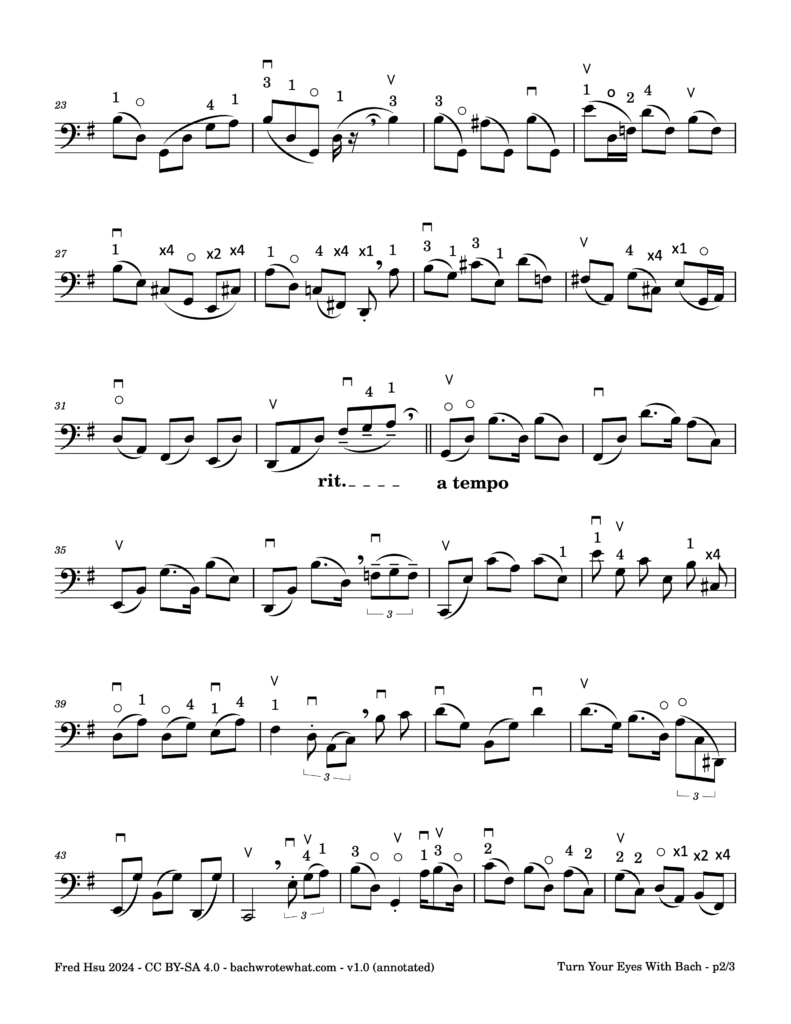Free Sheet Music, Hymn, Intermediate Cellists
First published on May 2, 2024 by Seb
Last updated on May 4, 2024 by Seb
The composer relayed this origin for the piece you find here:
I can’t get the tune out of my head, after listening to Kevin Olusola play “Turn Your Eyes Upon Jesus”. So I rewrote it as a self-accompanied cello piece. Like my recent recompositions, I lowered this one a fifth to G major to better use my cello’s natural sound. The result no longer sounds like the original adagio tune. I like to think it sounds like a modern Bach solo. But the original tune is still embedded in the music. See if you can hear it.
– the recomposer
Find below sheet music with only notes. Feel free to slur notes with your own favorite phrasing. Or further revise this rearrangement. Both PNG and PDF versions are available.
The PDF may also be downloaded from the International Music Score Library Project (IMSLP) at Turn Your Eyes With Bach (Hsu, Fred).
By transposing the original down a fifth, the arrangement allows notes from the original melody to be played with the first position on two strings (A, D). It also changes the key from D major to G major. This allows cello’s G and C strings to better add to the overall harmony.
If you are curious about how the recomposer approached this piece as an amateur cellist himself, check out the annotated sheets below. More advanced cellists will want to figure out their own bowings and fingerings.
If you plan to improve on this music, start with Musescore files which you can further edit in the free Musescore app. But since you can’t download most Musescore files on the commercial Musescore’s website unless you are a paid user, we store .mscz files on this site whenever we can, so you can freely download them here. They are saved here as .zip files because WordPress does not accept .mscz files. Just download them and unzip:
The original lyric and music was written by Helen Howarth Lemmel in 1922. Copyright for the original have by now expired, and the work is now in the Public Domain in the USA. This recomposition itself is made available for all to play under a Creative Commons license, specifically the Attribution-ShareAlike 4.0 International. To view a copy of this license, visit https://creativecommons.org/licenses/by-sa/4.0/.
You may also consult IMSLP’s excellent discourse on how Creative Commons licenses apply to work of music and derivative work such as recordings of a composition. In short, you can freely use, share, perform and record this work, so long as you credit the composer, and continue to share you derivative work under the same CC BY-SA license, even if you do it for profit.







